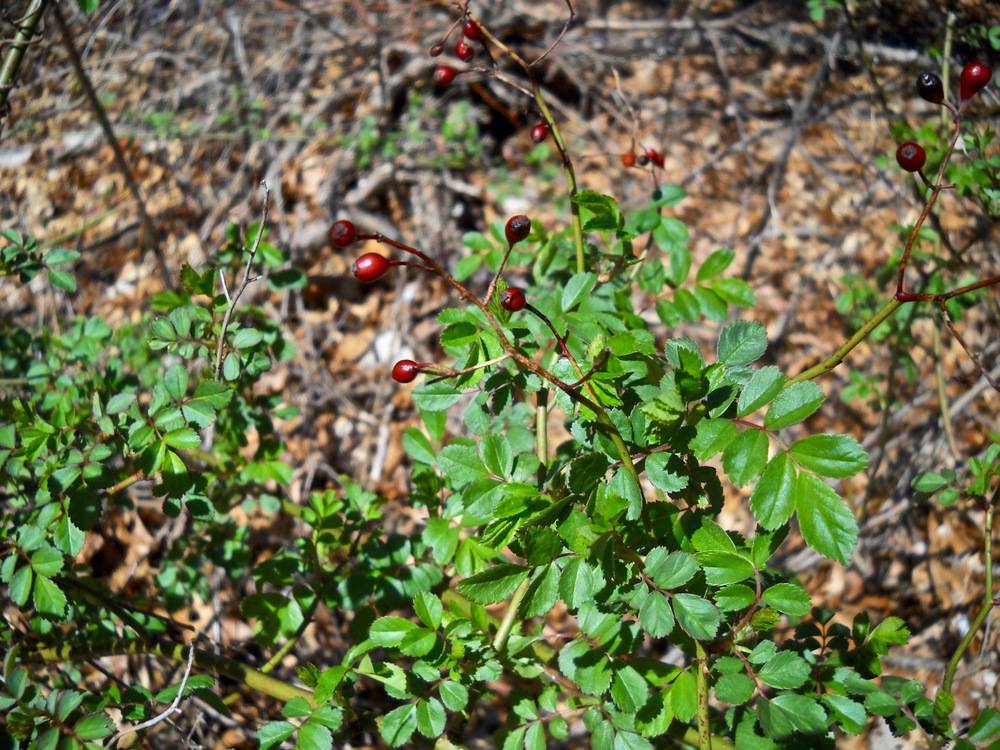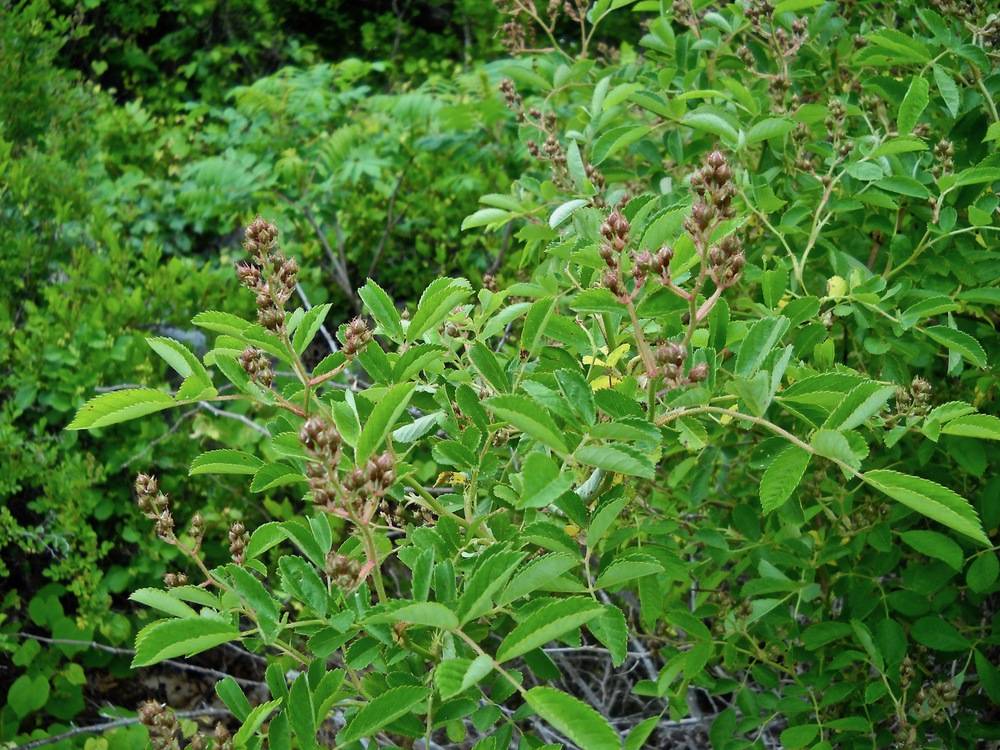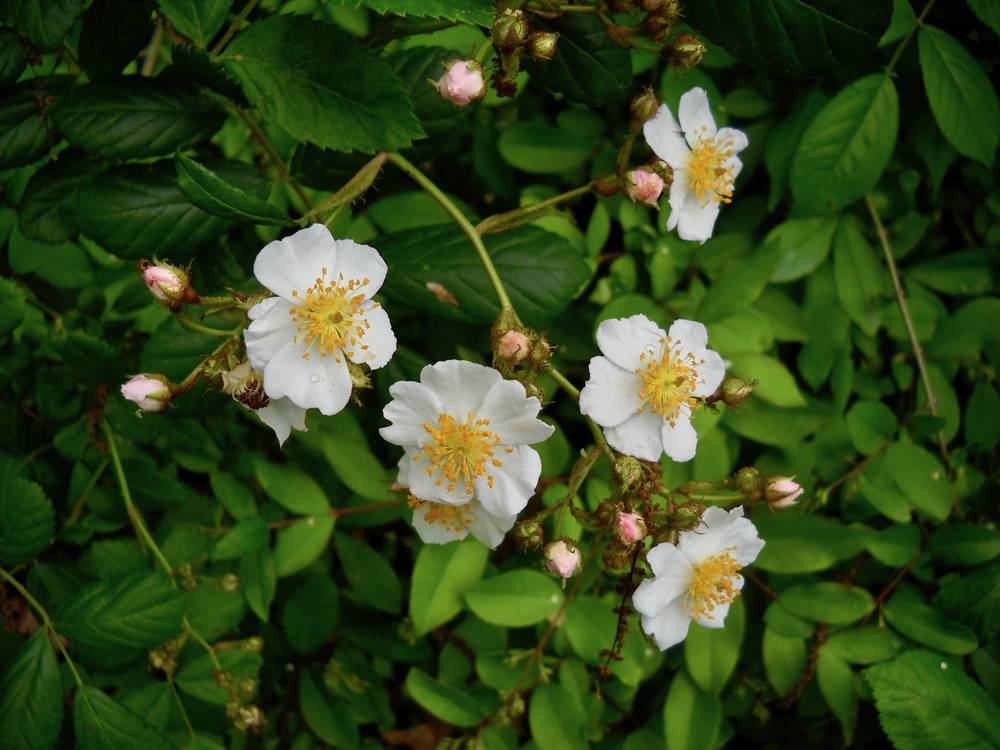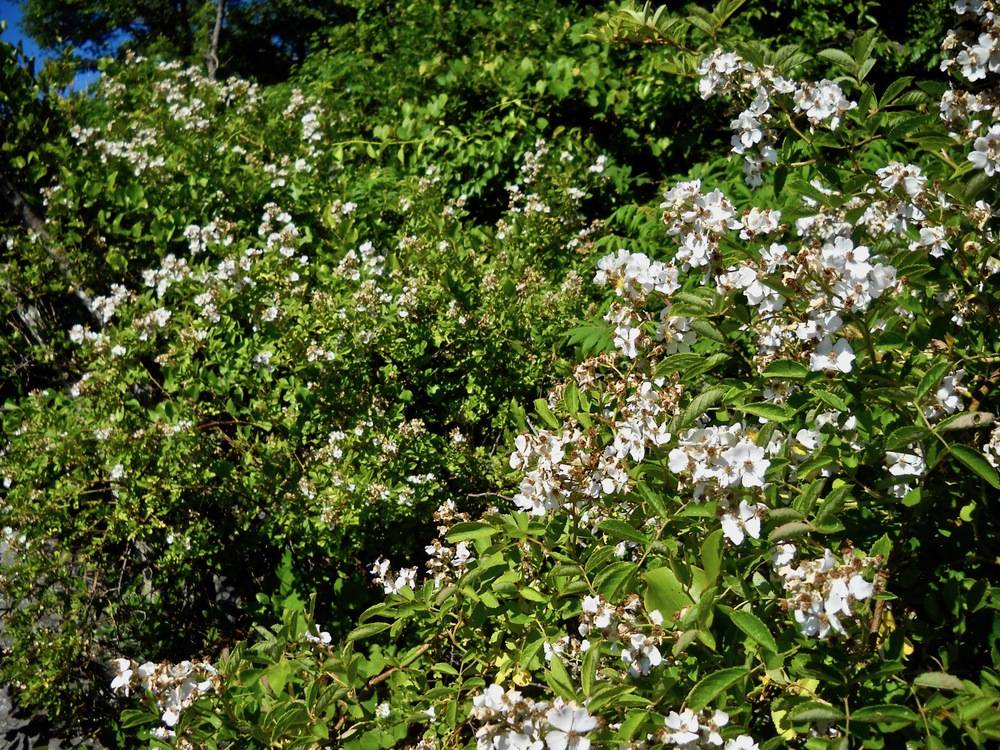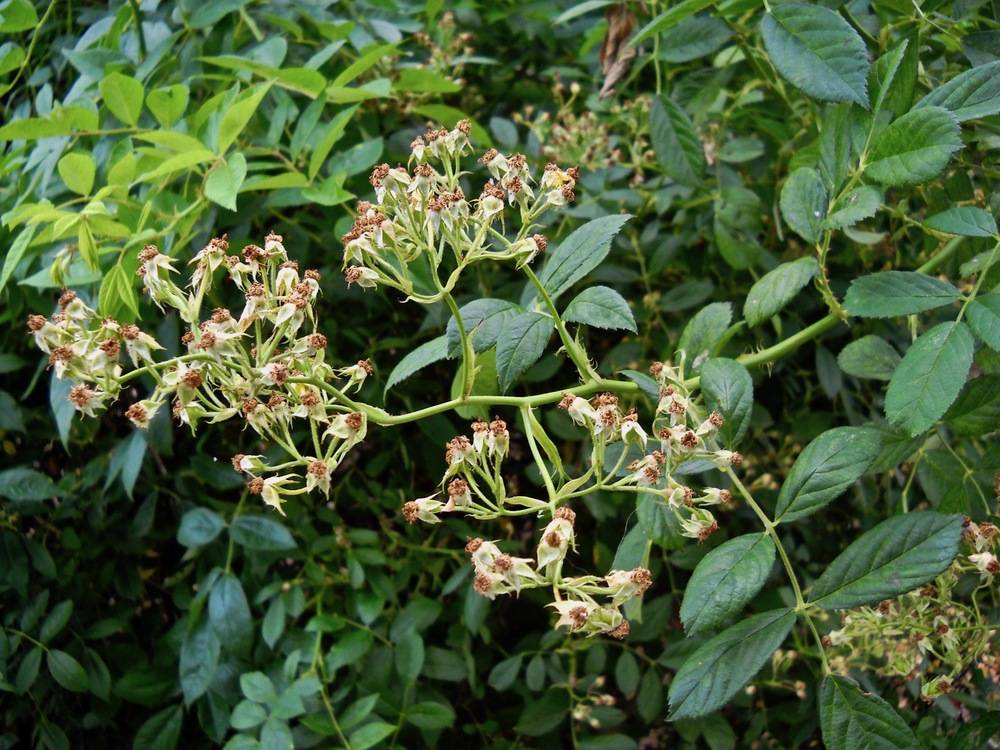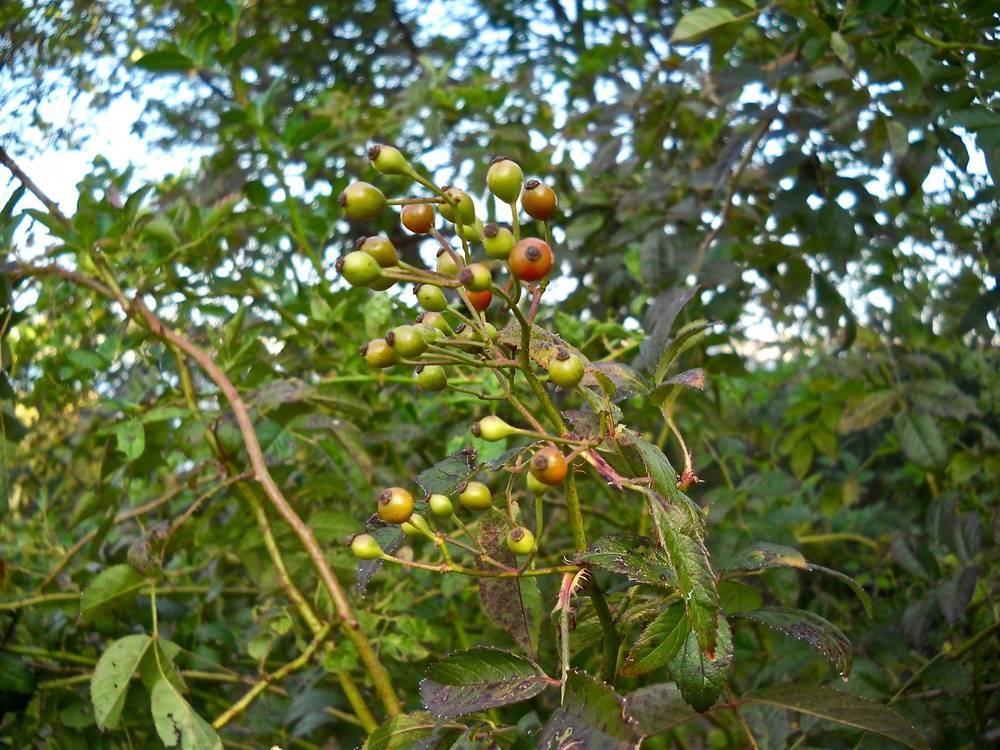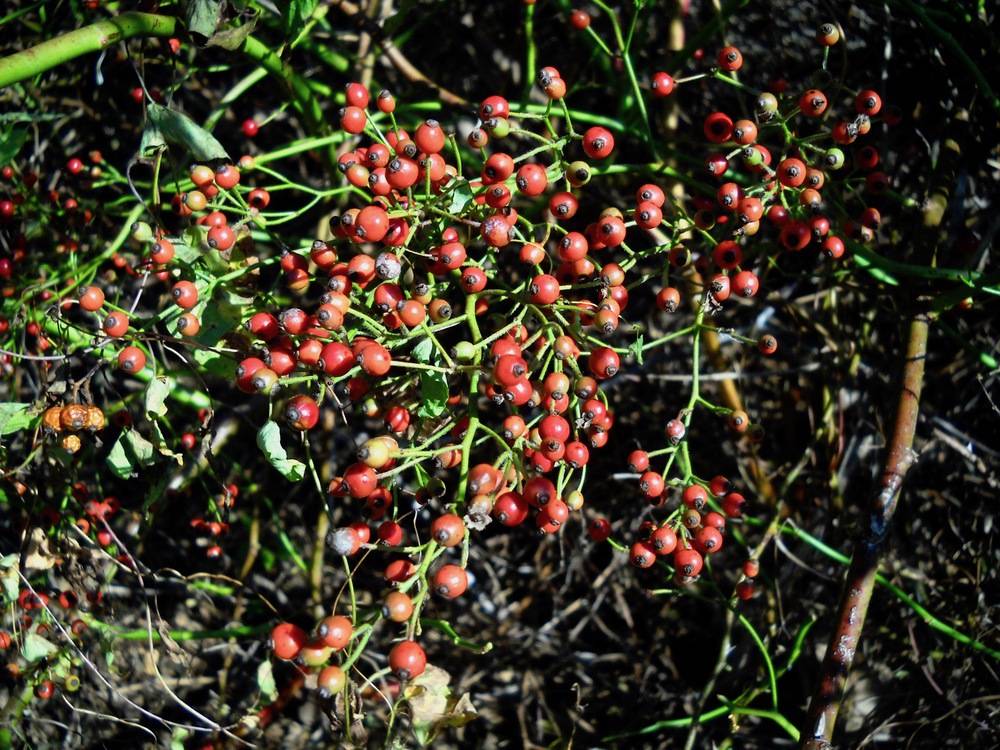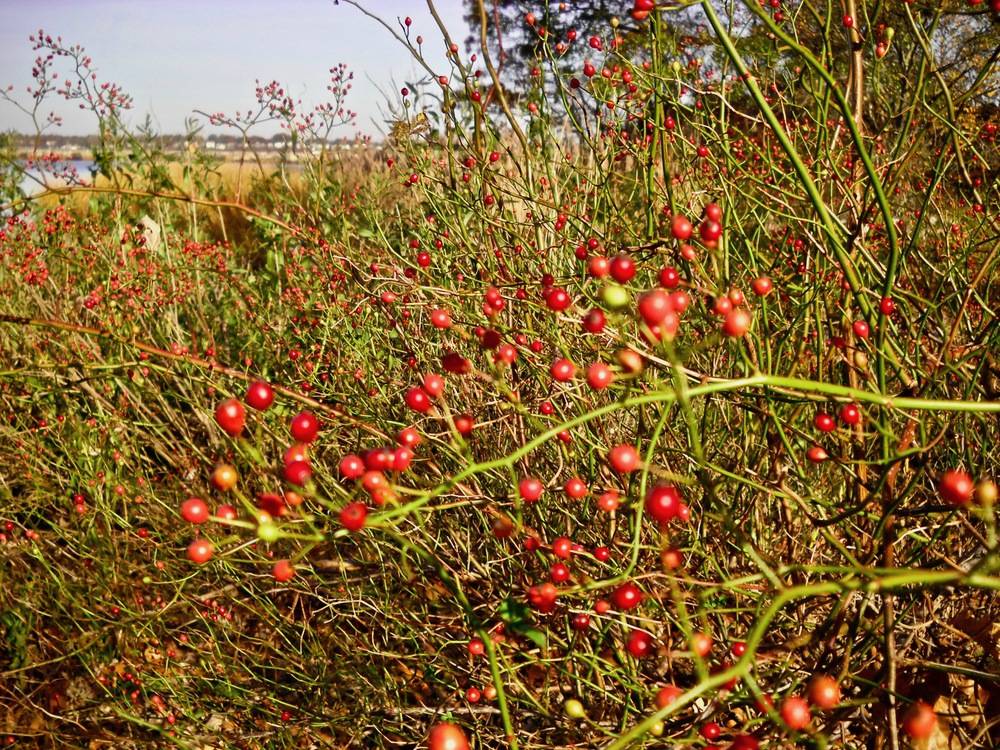rambler rose
Rambler rose is a perennial shrub native to Japan and Korea and was first brought into the U.S. for use as rootstock for cultivated roses in 1886. The U.S. Soil Conservation Service subsequently encouraged its use in controlling soil erosion in the 1930's. It also became popular as plantings in fence rows to enclose livestock and to provide cover for wildlife. It fulfilled its intended uses but rambler rose unfortunately had all the earmarks of an invasive species and has been listed as such in New England.
Rambler rose is not as abundant as the Asian bittersweet at Salter Grove but there were some very large plants that covered the crowns of small trees. For the most part, it prefers higher ground that is sunny. Several individuals along the Upland Trail are monitored and routinely trimmed so they will not suppress the growth of other species.
The common name used in this guide is one of several and refers to the ability of its long arching branches to establish roots on the ground as far as 15 feet from the original stem. Alternatively, the long branches latch onto taller vegetation nearby and continue to grow vertically, all the while sending out side branches. In sunny situations, a single plant can quickly grow into a thorny impenetrable thicket that is good for sheltering wildlife, but would exclude other plant life.
Another common name, multiflora rose, refers to the great masses of fragrant white flowers that appear in late spring. Many insect visitors are attracted to the copious production of sweet pollen to result in a high fruit set. The scarlet rose hips that mature on a large plant contain upwards of thousands of seeds and are dispersed by birds and small mammals that consume them during the winter. Once established, Rambler rose can thus spread far and wide because the seeds have a high rate of germination and can remain viable for 20 years.
As in other introduced species, rambler rose has few natural enemies. So, human intervention would be required for controlling its abundance.

